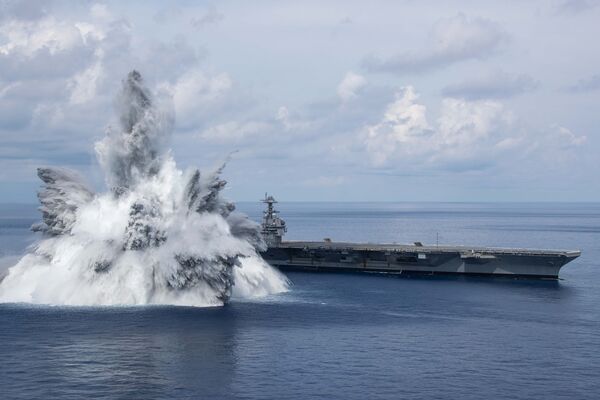
Aircraft carrier USS Gerald R Ford completed shock trials in 2021. (US Navy)
The US Navy's (USN's) Gerald R Ford aircraft carrier faces numerous hurdles, the Government Accountability Office (GAO) said in an 8 June report, but the unit price for the ships is decreasing.
The GAO catalogued developmental, operational, and financial issues with the Ford-class programme in its annual report on major Pentagon acquisitions, but also noted that per-unit costs had dropped by 10.6% to USD12.5 billion as of September 2020 compared with the first full estimate of USD14 billion in April 2004.
During that same period, development costs rose by 16.9% to USD6.6 billion and overall procurement costs rose by 18.8% to USD43.3 billion – both of which were offset by the increase by one carrier to a total of four, an increase of 33.3%.
One of the reasons for the increase in the number of ships, at a relatively cheaper cost, is because of a contract approval for a dual-contract buy.
The GAO report noted that the 12 critical technologies on carrier USS Gerald R Ford (CVN 78) are mature, but according to the programme office “challenges persist in demonstrating their reliability”.
The navy delivered all 11 Advanced Weapons Elevators (AWEs) to operate by December 2021, the GAO said. “If future testing identifies issues with the elevators, changes are likely to be costly and time-consuming to address,” the report added.
The navy also continues to struggle with the reliability of the Electromagnetic Aircraft Launch System (EMALS) and Advanced Arresting Gear (AAG) needed to meet requirements to rapidly deploy aircraft, the GAO said.
Looking to read the full article?
Gain unlimited access to Janes news and more...







